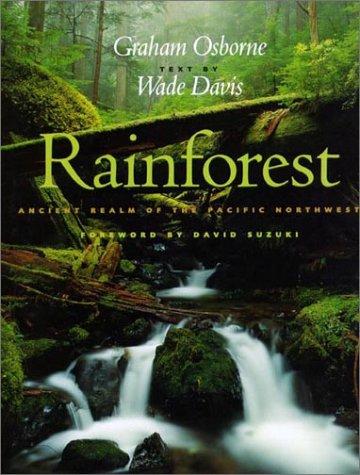About BC Books Online
BC Books Online was created for anyone interested in BC-published books, and with librarians especially in mind. We'd like to make it easy for library staff to learn about books from BC publishers - both new releases and backlist titles - so you can inform your patrons and keep your collections up to date.
Our site features print books and ebooks - both new releases and backlist titles - all of which are available to order through regular trade channels. Browse our subject categories to find books of interest or create and export lists by category to cross-reference with your library's current collection.
A quick tip: When reviewing the "Browse by Category" listings, please note that these are based on standardized BISAC Subject Codes supplied by the books' publishers. You will find additional selections, grouped by theme or region, in our "BC Reading Lists."
 Enlarge Cover
Enlarge Cover
With their towering spruces and cedars, verdant groundcover and cloaks of mist, the temperate rainforests of North America have long been a source of wonder and awe. Extending from northern California to southern Alaska, these immense and mysterious forests are home to a constellation of life that is unique on this planet.
In this magnificent photographic collection, Graham Osborne's breathtaking images depict the many guises of the rainforest gnarled tree trunks dripping with moss, the spires of Douglas firs reaching into the sky, waterfalls tumbling over time-worn rocks, ice-encased fern fronds in winter, scarlet maple leaves littering the ground in autumn, a burst of wildflowers along a river bank in spring. Other photographs depict a tidepool rich with sea life, the Coast Mountains at sunset and sea stacks off the coast capped with old-growth trees.
In his eloquent text, Wade Davis describes the scale and abundance of these rainforests, where redwoods reach nearly 120 metres and red cedars can be 6 metres or more across at the base. These and other giant conifers form the basis of one of the richest ecosystems in the world, where salmon and eagles proliferate, tiny seabirds lay their eggs in underground nests among the roots of ancient cedars, lungless salamanders in forest streams absorb oxygen through their skin, and creatures live on dew in the canopy of the forest and never touch the ground. Davis also discusses the role of the rainforest in Native culture and mourns the loss of much of this ancient forest through overcutting and other shortsighted forestry practices.


